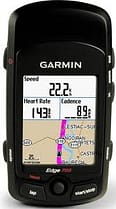 Garmin GPS tracking technology is changing the way car and bicycle accident claims are settled.
Garmin GPS tracking technology is changing the way car and bicycle accident claims are settled.
Last year a well-known professional cyclist, Ryan Sabga, was hit by a car while crossing an intersection in Colorado during one of his training sessions. The driver, coming out of an alley, was looking over her right shoulder. She stepped on the gas and made a left turn directly into Mr. Sabga as he reached the middle of the street, the New York Times reported. “I yelled as she hit the gas harder and drove right into me,” he wrote in a blog he keeps for his racing team, Black Dog Professional Cycling.
“She still didn’t see me. Somehow, I did a sort of madison throw” — an extended-arm maneuver — “off the hood of her car and got clipped on my left leg as I launched off. I was badly off balance and then crashed hard on my right side on the side of the road.”
The driver told the police she didn’t think she had hit Sabga. Though her car had a telltale dent, the officer said that without proof of where the cyclist had entered the intersection, he would not be able to write a citation against the driver. That meant Mr. Sabga, who was relatively unscathed, would not be able to get her insurance company to cover the damage to his bike, which was now in pieces.
Later that day it dawned on Mr. Sabga that he might have the proof he needed in the data stored in the Garmin (NASDAQ: GRMN) GPS tracking device he used for training.
Most professional cyclists use a cycle computer that can your location and speed as well as heart rate and pedaling rate. After each ride, a cyclist can upload the data to one of a number of software applications or to a Web service, which will map rides and compare them with previous efforts or those of other riders on the same route.
A Garmin bike computer provides valuable data for any type of cycling; training, touring, commuting and even mountain biking thanks to its rugged waterproof design. Garmin’s wireless GPS tracking technology transfers speed, cadence and heart rate data from sensors to the device.
“Clear as day, you could see where I stopped at the stop sign, where I got hit by the car and where my bike came to rest,” he wrote. “On the corresponding time stamp, you could see the speeds, the stops and even where my heart rate spiked as she hit me.”
The police were unwilling to pursue the case, but they suggested that he send the data to the driver’s insurance company. He did so within a day, and the company took responsibility for the accident.
According to an attorney who specializes in bike and car accidents, James Reed of the Ziff Law Firm in New York, said, “It’s important for people who are representing the injured people or the insurance companies to know how to obtain and analyze the data. Frankly, it’s probably going to be a booming new industry for experts.”
—————————————-
A version of this article appeared in print on September 6, 2011, on page D1 of the New York edition with the headline: Bike Crash Wiped Details; GPS Data Filled Them In.
http://www.nytimes.com/2011/09/06/science/06accident.html?pagewanted=2&_r=1